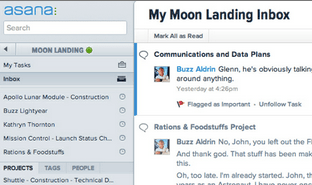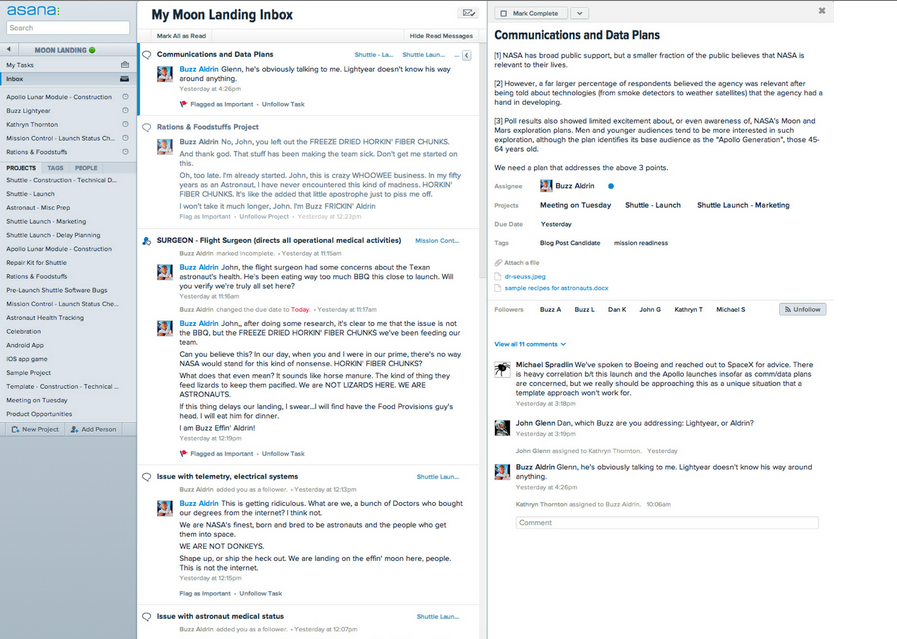Email. Everybody hates it but no tech company has figured out how to replace its old post-office metaphor with something more intuitive for the modern world. But Asana, the high-profile task management company started by early Facebookers, is taking a shot at this goal with a new feature called Inbox.
This isn’t a direct competitor to email, though, as cofounder Justin Rosenstein related to me during a demo earlier this week.
Instead, as he described it, the company is combining the most useful parts of email, plus activity feeds, notifications and other types of messaging systems that you’ll see on sites like Facebook and Twitter. The result is a central column of new information flowing through, showing you all the activity happening with you and your colleagues in Asana.
So, if you’re a part of a project in Asana — say “Guest Posts” that an editorial staff is editing for the coming weekend (a real use case) — you can click on the Inbox button at the top of the right-hand navigation column in the site to track all of the latest activity from others in the group. You’ll see “stories” sort of like in the Facebook news feed, but each story is about a task, and describes an action. So if Peter Ha marked a task you assigned him as complete, you’ll know that he’s finished editing a guest post. Rosenstein adds that other activity will appear, like if someone creates a task that you do not follow within a project, you’ll see only one notification about it.
Each Task story lets you flag it as important or unfollow in the event your colleagues are getting too spammy. And, you only see updates on tasks and projects that you’re subscribed to. Real-time updates show up as other users make changes, and each story gets archived automatically as you read through so you’re automatically resetting to zero by using it.
Compare this to how email might work. I send Peter a doc to edit, which he moves into Google Docs and edits separately. He emails back saying that he’s working on it. Then he has to email back to confirm. And if we get into an argument about how to edit it or whatnot, then that’ll just drag the thread out further.
Now look back at Asana. Each task already contains all the metadata about the article we’re working, including any notes we (or that other guy Anthony) leave for each other about it. The discussion, the scheduled run-date, the person responsible and everything else is there instead of in email or in a spreadsheet somewhere — and this new Inbox feed means we only need to click once then browse to see the latest news.
The main problem with the new feature is that most of the value is in cutting down internal communication email. That’s been great for the growing number of companies using it, including Foursquare, Twitter and AirBnB.
I told Rosenstein that as useful as Asana was for our guest post system, we’re too loose of an organization to need this sort of internal tool for most stories. Our writers, after all, have great freedom to publish as they please without going through a task-driven review process. What we could really use, I explained, was an easier way to import any email from our inboxes into an Asana task; its current system requires a bunch of copy-pasting special Asana codes into your email adress books then remembering to cc any outbound email to them, which is a pain. He replied they’ve gotten many requests in this area from all sorts of other organizations with lots of external email communication (customer service organizations being a good example, heh). And he promised that there’s a plan on the roadmap for something along these lines.
Read the official details of the Inbox launch from my old VentureBeat colleague Dan Kaplan, who now works for Asana.

